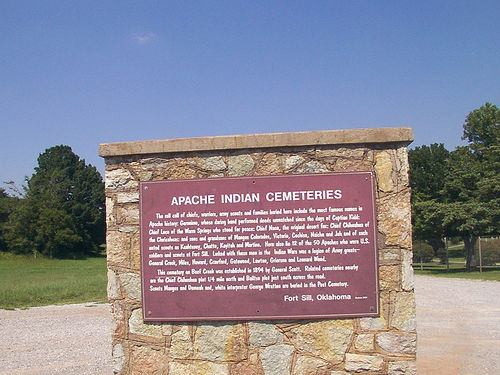Apache Prisoner-of-War Cemeteries
Apache Prisoner-of-War Cemeteries
Apache Prisoner-of-War Cemeteries
Here beneath Oklahoma Skies far from their native haunts in Arizona, New Mexico and northern Mexico is the resting place for more than 300 Apaches of the Chiricahua, Warm Springs, and Nedni tribes. During and after the Geronimo campaign of 1886 these people - hostiles, friendlies, and scouts alike-were sent as prisoners-of-war to Florida, then to Alabama.
In 1894 they were brought to Fort Sill where they remained for the next 19 years. Living in 12 villages, with many of their leading men serving as soldiers and U.S. scouts, they built their own houses, fenced the entire military reserve, dug water tanks which still dot the landscape, raised 10,000 cattle, and grew bountiful crops. Granted freedom by Act of Congress in 1913, 183 returned to New Mexico while 82 settled on farms near here.
This burial ground is a memorial both to their historic past and to their industry and perseverance on their long road to a new way of life.
Fort Sill, Oklahoma
Apache Indian Cemeteries
The roll call of chiefs, warriors,army scouts and families buried here include the most famous names in Apache History:Geronimo, whose daring band performed deeds unmatched since the days of Captian Kidd; Chief Loco of the Warm Springs who stood for peace; Chief Nana, the original desert fox; Chief Chihuahua of the Charicahoas; and sons and grandsons of Manus Colorados, Victorio, Cochisa, Naiche and Juh and of such noted scouts as Kashteney, Chatta, Kayitah and Martine.
Here also lie 12 of the 50 Apaches who were U.S. soldiers and scouts at Fort Sill. Linked with these men in the Indian wars was a legion of Army greats-General Crook, Miles, Crawford, Gatewood, Lawton, Grierson and Leonard Wood.
This cemetery on Beef Creek was established in 1894 by General Scott. Related cemeteries nearly are the Chief Chihuahua plot 1/4 miles north and Bailtso plot just south across the road. Scouts Mangus and Domeah and , white interpreter George Wratten are buried in the Post Cemetery.
Fort Sill, Oklahoma
National Register of Historic Places:
Indian Cemeteries *** (added 1977 - Site - #77001510)
Also known as Apache Prisoner-of-War Cemeteries, & Otipoby Comanche Cemetery
Fort Sill Military Reservation, Fort Sill
Historic Significance: Event
Area of Significance: Native American, Military
Period of Significance: 1875-1899, 1900-1924
Owner: Federal
Historic Function: Defense, Funerary
Historic Sub-function: Cemetery
Current Function: Defense, Funerary
Current Sub-function: Cemetery
Here beneath Oklahoma Skies far from their native haunts in Arizona, New Mexico and northern Mexico is the resting place for more than 300 Apaches of the Chiricahua, Warm Springs, and Nedni tribes. During and after the Geronimo campaign of 1886 these people - hostiles, friendlies, and scouts alike-were sent as prisoners-of-war to Florida, then to Alabama.
In 1894 they were brought to Fort Sill where they remained for the next 19 years. Living in 12 villages, with many of their leading men serving as soldiers and U.S. scouts, they built their own houses, fenced the entire military reserve, dug water tanks which still dot the landscape, raised 10,000 cattle, and grew bountiful crops. Granted freedom by Act of Congress in 1913, 183 returned to New Mexico while 82 settled on farms near here.
This burial ground is a memorial both to their historic past and to their industry and perseverance on their long road to a new way of life.
Fort Sill, Oklahoma
Apache Indian Cemeteries
The roll call of chiefs, warriors,army scouts and families buried here include the most famous names in Apache History:Geronimo, whose daring band performed deeds unmatched since the days of Captian Kidd; Chief Loco of the Warm Springs who stood for peace; Chief Nana, the original desert fox; Chief Chihuahua of the Charicahoas; and sons and grandsons of Manus Colorados, Victorio, Cochisa, Naiche and Juh and of such noted scouts as Kashteney, Chatta, Kayitah and Martine.
Here also lie 12 of the 50 Apaches who were U.S. soldiers and scouts at Fort Sill. Linked with these men in the Indian wars was a legion of Army greats-General Crook, Miles, Crawford, Gatewood, Lawton, Grierson and Leonard Wood.
This cemetery on Beef Creek was established in 1894 by General Scott. Related cemeteries nearly are the Chief Chihuahua plot 1/4 miles north and Bailtso plot just south across the road. Scouts Mangus and Domeah and , white interpreter George Wratten are buried in the Post Cemetery.
Fort Sill, Oklahoma
National Register of Historic Places:
Indian Cemeteries *** (added 1977 - Site - #77001510)
Also known as Apache Prisoner-of-War Cemeteries, & Otipoby Comanche Cemetery
Fort Sill Military Reservation, Fort Sill
Historic Significance: Event
Area of Significance: Native American, Military
Period of Significance: 1875-1899, 1900-1924
Owner: Federal
Historic Function: Defense, Funerary
Historic Sub-function: Cemetery
Current Function: Defense, Funerary
Current Sub-function: Cemetery
Location
Directions
Location:
From The Fort Sill Museum take Randolph Road to Quinette Road, pass the Patriot Club and the Golf Course pass under I-44 and follow the signs to the Apache Cemetery About 2 1/2 miles.
Geronimo's Grave is located here.
Fort Sill Military Reservation, Fort Sill, OK
From The Fort Sill Museum take Randolph Road to Quinette Road, pass the Patriot Club and the Golf Course pass under I-44 and follow the signs to the Apache Cemetery About 2 1/2 miles.
Geronimo's Grave is located here.
Fort Sill Military Reservation, Fort Sill, OK
Regions
Maps
- 34.696022, -98.371008
- OpenStreetMap
- Google Maps
- Bing Maps
- Apple Maps
- MapQuest
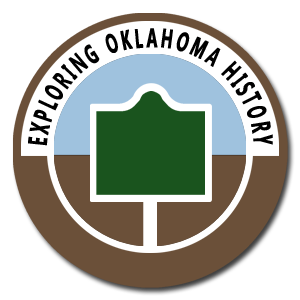
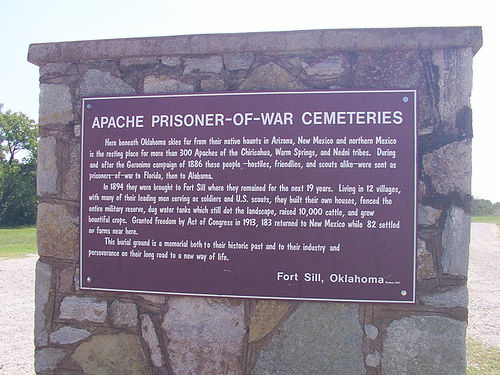
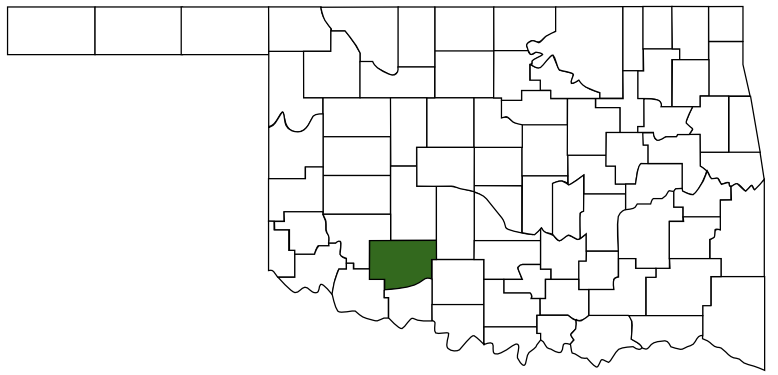 Comanche County
Comanche County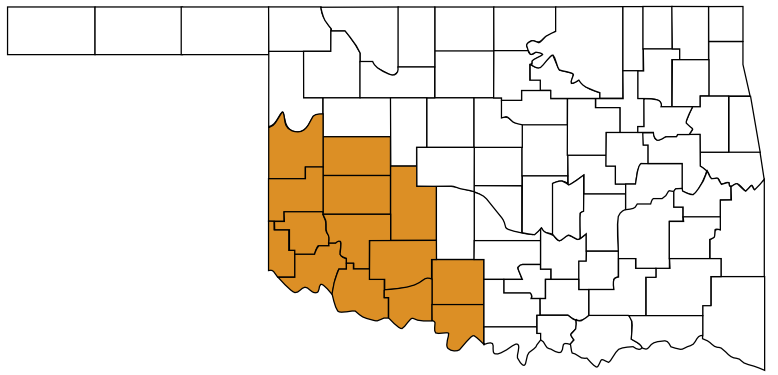 Great Plains Country
Great Plains Country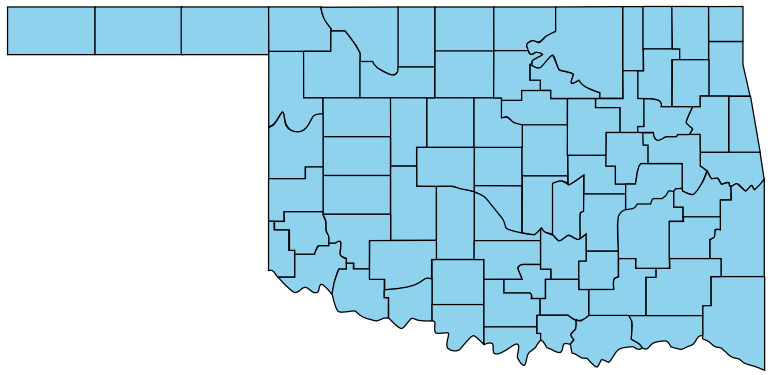 Oklahoma
Oklahoma